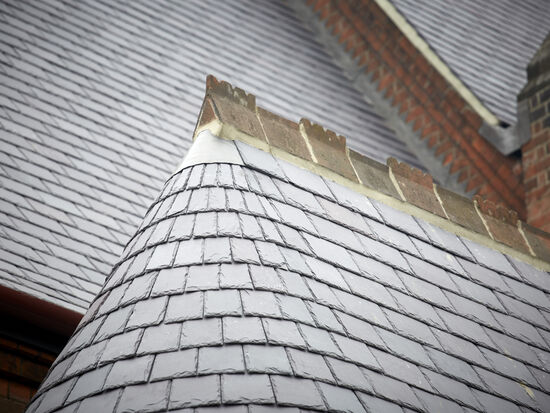St. Johns Church, Newington
Where: Newington, Hull
Challenge: A new, conservation-approved roof for Hull’s last surviving fishing community church
For decades Hull’s fishing community found support and companionship in their local church. Now, after 140 years, the Gothic-style building that had survived wartime bombing and the ravages of time needed a new roof.
For decades Hull’s fishing community found support and companionship in their local church. Now, after 140 years, the Gothic-style building that had survived wartime bombing and the ravages of time needed a new roof.
The original 1878 roof coverings of St. John The Baptist Church had reached the end of their effective lifespan.
The vicar, Rev. Tony Cotson, approached us to help him and his team produce accurate budget costs for the funding bid to renovate the “fishermen’s church” in the heart of Hull’s former trawling community. We were delighted to be successful in securing the roofing works element of the project with Bridgett Conservation, the appointed main contractor, carrying out timber works and internal alterations.
The process
Working on the steep Gothic pitch slopes would be challenging at any time of year, but became particularly so in the winter months, with several weeks of snow and ice.
We took the opportunity to fit insulation in between the rafters whilst the roof structure was exposed, with 2no layers of rigid insulation board carefully cut to size and fitted into place. This would reduce the church’s heating costs and help to make the internal spaces more comfortable in cold weather.
The new roof has a material link with St. John’s roots, as we sourced 25,000no new Penrhyn Welsh slates from the same quarry that had produced the original slates 140 years earlier!
All natural slates have to be sorted, holed and graded into thickness prior to being fixed, with the thicker slates always being fitted at the eaves and the thinner slates being fitted towards the upper section of roof slopes. This grading process is critical in achieving a beautifully flat finish to the slating, so considerable time and effort was spent at ground level before any slates were actually fitted on the roof.
Whilst we have carried out many church re-roofs over the years, there were some interesting details associated with this project. One was the Vestry roof with its curved section of slating to the east end; once again, we endeavoured to replicate the original beautiful Victorian craftsmanship.
One departure from the original detailing was the replacement of all low-level flashings using Terne Coated Stainless Steel instead of the traditional lead. As lead thefts have increased in recent years, English Heritage accepts this as a suitable replacement. This part of the works used our hard-metal skills.
Our thanks go to Rev. Tony for this memorable project. We hope our roof will continue to provide a beautiful protective covering to the Fishermen’s Church for another 140 years!







